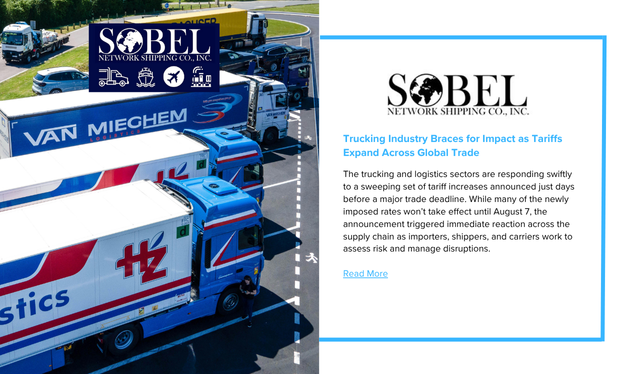The trucking and logistics sectors are responding swiftly to a sweeping set of tariff increases announced just days before a major trade deadline. While many of the newly imposed rates won’t take effect until August 7, the announcement triggered immediate reaction across the supply chain as importers, shippers, and carriers work to assess risk and manage disruptions.
The new tariff structure includes baseline duties of 10% across nearly all global trading partners, with additional levies targeting specific commodities such as copper and Canadian goods. A separate executive order also suspends the de minimis exemption globally, adding complexity for lower-value shipments.
Freight forwarding and customs teams across the logistics industry are navigating a surge of inquiries, exception requests, and supply chain adjustments. Experts note that the new tariffs—some implemented, others pending—come with nuances that vary by commodity and country.
Supply chain leaders are urging shippers to lock in production schedules, accelerate cargo readiness, and explore rerouting options. With many businesses having already front-loaded inventory earlier in the year, attention is now shifting to managing back-half shipments under a more expensive and unpredictable trade environment.
Strategic responses range from re-sourcing from lower-tariff countries to exploring domestic production, where feasible. Still, analysts warn that rising freight costs are likely to pass through to the end consumer, especially as cost-cutting options diminish and global inventory tightens.
Trucking firms and logistics providers are also contending with increased internal costs. Tariffs on imported parts and materials such as tires, electronics, and truck components are expected to push up maintenance expenses and new vehicle pricing. This, combined with a potential slowdown in consumer demand, could dampen freight volume through the remainder of the year.
Industry analysts caution that further policy shifts remain likely. Legal debates over the justification of the tariffs continue, and new trade deals may emerge, adding to the uncertainty. Companies are being advised to get their Harmonized System codes, product-level data, and country-of-origin documentation in order now, before enforcement tightens.
The overall message from supply chain experts is clear: the old rules of global trade are being rewritten. Businesses that want to remain competitive will need to rethink sourcing strategies, optimize logistics operations, and be ready to adapt—quickly.


